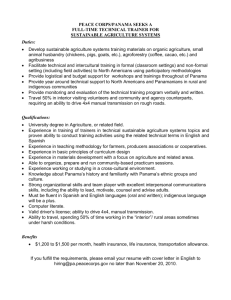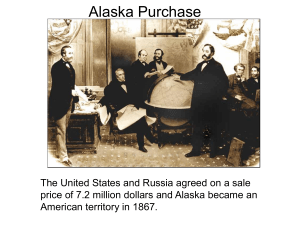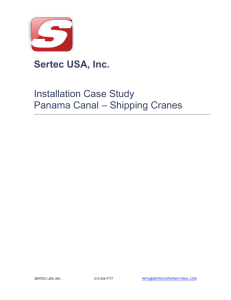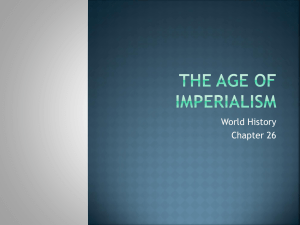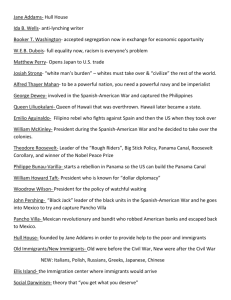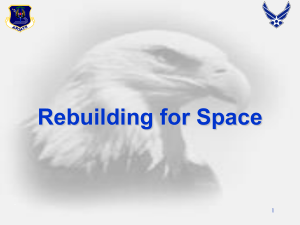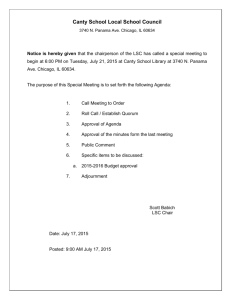File - Stony Brook Global Medical Brigades
advertisement
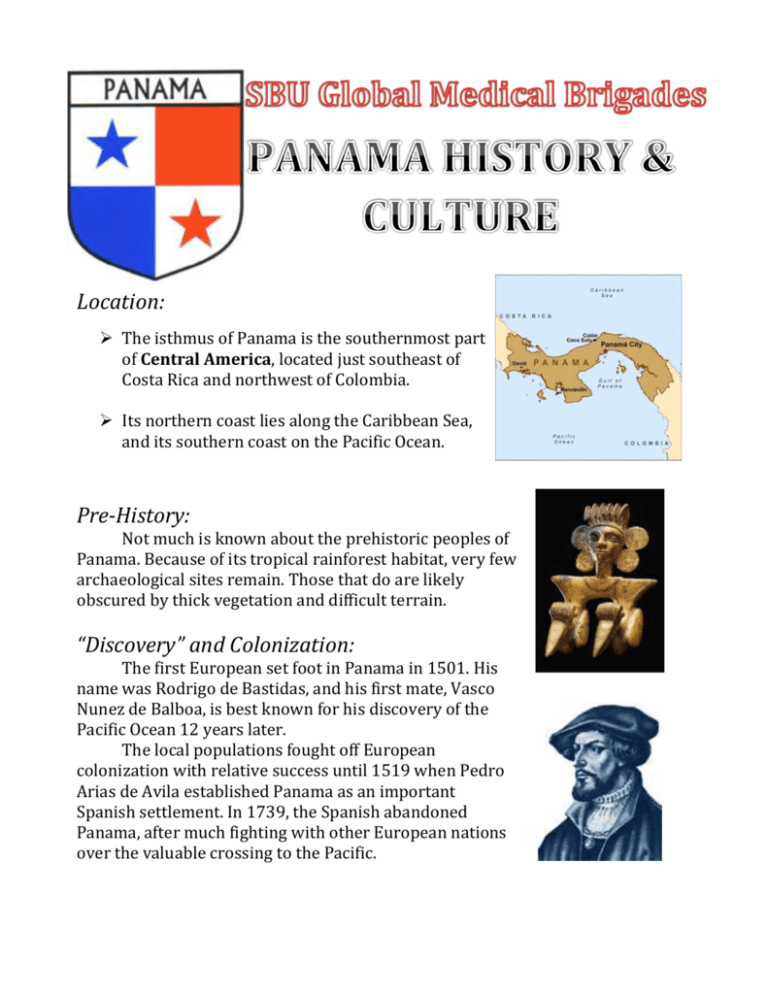
Location: The isthmus of Panama is the southernmost part of Central America, located just southeast of Costa Rica and northwest of Colombia. Its northern coast lies along the Caribbean Sea, and its southern coast on the Pacific Ocean. Pre-History: Not much is known about the prehistoric peoples of Panama. Because of its tropical rainforest habitat, very few archaeological sites remain. Those that do are likely obscured by thick vegetation and difficult terrain. “Discovery” and Colonization: The first European set foot in Panama in 1501. His name was Rodrigo de Bastidas, and his first mate, Vasco Nunez de Balboa, is best known for his discovery of the Pacific Ocean 12 years later. The local populations fought off European colonization with relative success until 1519 when Pedro Arias de Avila established Panama as an important Spanish settlement. In 1739, the Spanish abandoned Panama, after much fighting with other European nations over the valuable crossing to the Pacific. Independence: In 1821, Panama gained its full independence from Spain and joined the nation of Gran Colombia (with Colombia, Ecuador, Bolivia, Peru, and Venezuela), which dissolved just 10 years later. Panama remained a province of Colombia, from which it gained independence in 1903. The Canal: The first attempt at building a canal connecting the Atlantic to the Pacific was by the French in 1878, on contract with Colombia. This venture failed due to disease (malaria and yellow fever) and bankruptcy. The USA stepped in in 1904, and the canal was completed in just one decade. Panamanians soon became discontent with Uncle Sam’s ownership of the canal zone, and it became a source of tension between the two countries. General Omar Torrijos pressured Jimmy Carter into ceding control of the canal to Panama. The Torrijos-Carter treaty officially granted control on December 31st, 1999. Military Rule: Torrijos was killed in a plane crash in 1981, and two years later, power was seized by Colonel Manuel Antonio Noriega. His rulership was engulfed in a drug-trafficking scandal, and in 1989 he declared war on the USA. In response, the US mounted “Operation Just Cause,” which killed more than 2000 civilians and all but destroyed Panama City. Noreiga surrendered in January 1990, and was sentenced to 40 years in a US prison for drug trafficking. Recent History: The legitimate winner of the 1989 elections, Guillermo Endara, was sworn in after Noreiga’s fall. Since then, Panama has upheld a presidential representative democracy, in which the president is both head of state and head of government. The current president is Ricardo Martinelli, a member of the conservative party elected in 2009. Demographics: Panama had a population of 3,405,813 in 2010 (less than half of the population of NYC). Ethnicities are distributed roughly as follows: 68% Mestizo (mixed), 15% White, 10% Black, 6% Amerindian, and 1% Asian. More than half of this population lives in the urban corridor between Panama City and Colón. Spanish is the official and dominant language. Culture: Panamanian culture is largely rooted in European (specifically Spanish) tradition. However, it is important to note the contributions of African and indigenous populations. Culture is celebrated and expressed through a multitude of festivals featuring music and dancing. Religion: The most commonly practiced religion in Panama is Roman Catholicism. The Christmas parade, El desilfe de Navidad, is held yearly in Panama City. It is as much a celebration of national pride as it is religious- floats are decorated in Panamanian colors, and people wear traditional clothing (pollera dresses for women and montuno shirts for men. Sports: Baseball is the national sport of Panama. At least 140 Panamanians have successfully transitioned to play ball in America, including Rod Carew, Carlos Lee, and Mariano Rivera. Other popular sports include boxing, basketball, volleyball, football, etc. Education: Literacy in Panama is moderate at an estimated 91.9% in the year 2000. In comparison, the USA has a literacy rate of 99%. Education is compulsory between the ages of 6 and 15. Recently, enrollment has been increasing, especially in higher-level studies. Economics: The Panamanian economy is growing more quickly than almost any other Latin American country, rivaling Brazil with an average 10% annual growth rate in GDP. However, there exists a huge disparity in incomes, and in 2008, more than one third of the country lived in poverty, with 14.4% classified as “extreme poverty.” Panama’s currency, the balboa, introduced when the country won its independence from Colombia, has been tied 1:1 to the US dollar since its introduction, and both forms circulate. American dollars are the only form of paper money in Panama, but the country does mint and circulate its own coins, alongside American coinage. Where We’re Going We will be travelling to rural areas where poverty is at its peak and access to resources (including medical, economic, and other essentials) is at its most sparse. Our goal is to foster community development as a part of the holistic model so that in the future, these towns no longer rely on outsiders for assistance. DISCUSSION QUESTIONS 1. Why is it important to learn about the culture of a country before visiting? 2. How do you think Panama’s historic ties to the USA affect Panamanian’s perception of American tourists/volunteers? 3. As outsiders, is it our responsibility to minimize our impact on local culture? If so, how can we do this? Sources: LonelyPlanet.com and Wikipedia
